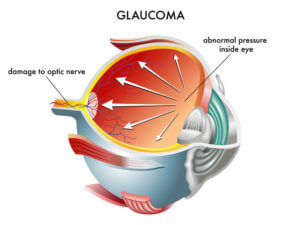Treatment of Ocular Diseases
Assessments of ocular and systemic health are important aspects of an eye exam. We integrate these evaluations into a comprehensive vision examination. This requires that we have an extensive knowledge of ocular diseases in addition to an understanding of how systemic disease can affect the eyes.
 In our office we routinely treat:
In our office we routinely treat:
- Glaucoma
- Dry eye
- Allergies
- Conjunctivitis (pink eye)
- Contact lens complications
- Foreign body removal from your eyes
- Corneal scratches
- Macular Degeneration
- Diabetic Eye Diseases
- Ocular Trauma / Eye Injuries
If you experience eye pain, changes in vision, redness or irritation that lasts overnight, or if you get a foreign object in your eye, please give us a call. Self-treatment usually results in delaying proper treatment. We are happy to see you the day you call to make you comfortable as quickly as possible.
We treat and manage eye and vision conditions that can be sight threatening, lead to eye discomfort, and may signal systemic health problems. Our doctors use advanced instrumentation to manage eye conditions such as: glaucoma, macular degeneration, diabetic retinopathy, dry eye syndrome, eye infections, and eye inflammation. Our clinic utilizes state of the art technology needed for the diagnosis and management of many ocular diseases. We have an OCT, a visual field unit, and corneal topography instruments. All instruments are on site and readily available! This is a unique aspect to our office and we continually strive to keep our technology up to date and often a step ahead.
Spectral Domain Optical Coherence Tomography (SD-OCT)
 Optical Coherence Tomography (OCT) is a non-contact medical imaging technology similar to ultrasound and MRI. With OCT, reflected light is used to produce detailed cross-sectional and 3D images of the eye.
Optical Coherence Tomography (OCT) is a non-contact medical imaging technology similar to ultrasound and MRI. With OCT, reflected light is used to produce detailed cross-sectional and 3D images of the eye.
The SPECTRALIS® SD-OCT simultaneously measures multiple wavelengths of reflected light across a spectrum, hence the name spectral domain. The SPECTRALIS system acquires 40,000 A-scans per second. The increased speed and a number of scans translate into higher resolution and a better chance of observing disease.
We use this technology to help diagnosis glaucoma, monitor macular degeneration, and monitor diabetic retinopathy. The OCT aides with monitoring any vitreo-retinal disorder.
Visit this page for some of the most common eye conditions.









